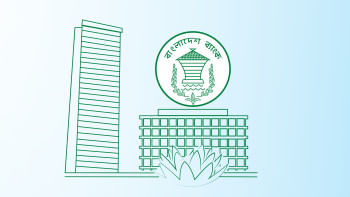Govt suspends use of Miltefosine
Following a row over the effectiveness of Miltefosine capsules and several deaths, the government has decided to halt treatment of Kala-azar (Visceral leishmaniasis) with Miltefosine.
Amphotericin B or injection of Sodium Antimony Gluconet (SAG) would be used in treating Kala-azar instead of Miltofosine, said Health Secretary AMM Nasir Uddin at a press conference at Bangladesh Secretariat yesterday adding that the district civil surgeons and the directors of hospitals have already been instructed about this.
The government also ordered different hospitals to return their stock of the capsule to the health directorate. It also ordered identifying patients who were treated with Miltefosine and to treat them with Amphotericin B or SAG injections.
The government will take further steps after receiving report from World Health Organisation (WHO), the secretary said without elaborating how long it would take to get the report.
"We have already sent manufacturing details and samples of Miltefosine manufactured by a local pharmaceutical company to WHO for further investigation as two renowned foreign laboratories sent negative results about the quality of the Miltefosine capsules," he said.
Popular Pharmaceuticals manufactured the Miltefosine capsules that have been used for treating patients of Kala-azar since May this year. Following a recent experiment, Paladin lab Inc of Canada and Slotervaart Hospital (Department of Pharmacy and Pharmacology) of the Netherlands said there was no Miltefosine in the capsules.
An expert committee was formed to give opinions about the reports of Paladin lab Inc and Slotervaart Hospital, the secretary said.
Since May 9 this year, at least 378 patients of Kala-azar were treated with Miltefosine. Of them seven died, said Director General of the Directorate General of Health Services (DGHS) Prof Abul Faiz adding that in 2001-02 at least 13 patients out of 133 died in Phulbaria.
Kala-azar is a contagious disease spread by sandfly and the poor mainly suffer from the disease. The disease breaks out in 45 districts of the country and some 10,000 patients are identified and treated every year.
The experts said the total number of Kala-azar patients is 40,000. It affects patients' immune system, causes persistent fever, anaemia, liver and spleen swelling, and if left untreated, it kills.
According to the WHO, the disease is endemic in three countries--Bangladesh, India and Nepal. Approximately 200 million people in the region are "at risk" of infection.
Bangladesh signed a Memorandum of Understanding (MoU) with Nepal and India in 2005 at the World Health Assembly to eliminate Kala-azar from the region by 2015.

 For all latest news, follow The Daily Star's Google News channel.
For all latest news, follow The Daily Star's Google News channel. 



Comments